
NGC 7074 is an edge-on lenticular galaxy located about 140 million light-years away in the constellation of Pegasus. NGC 7074 was discovered by astronomer Albert Marth on October 16, 1863.
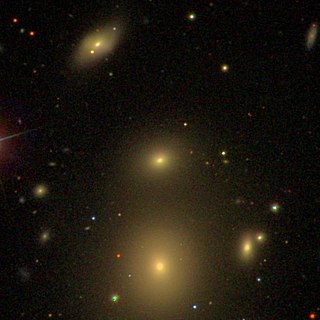
NGC 3841 is an elliptical or lenticular galaxy located about 300 million light-years away in the constellation Leo. It was discovered by astronomer John Herschel on March 25, 1827 is a member of the Leo Cluster.

NGC 3867 is a spiral galaxy located about 350 million light-years away in the constellation Leo. It was discovered by astronomer Édouard Stephan on March 23, 1884 and is a member of the Leo Cluster.
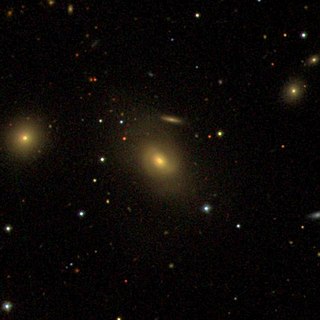
NGC 6055 is a barred lenticular galaxy located about 450 million light-years away in the constellation Hercules. The galaxy was discovered by astronomer Lewis Swift on June 8, 1886. It also a member of the Hercules Cluster and is a LINER galaxy.

NGC 3558 is an elliptical or a lenticular galaxy located 440 million light-years away in the constellation Ursa Major. It was discovered by the astronomer Heinrich d'Arrest on April 15, 1866. It is a member of the galaxy cluster Abell 1185 and is classified as a LINER galaxy.

NGC 4892 is a spiral or lenticular galaxy with LINER activity located 275 million light-years away in the constellation Coma Berenices. It was discovered by the astronomer William Herschel on April 11, 1785, and is a member of the Coma Cluster.

NGC 679 is an elliptical or a lenticular galaxy located 210 million light-years away in the constellation Andromeda. The galaxy was discovered by astronomer William Herschel on September 13, 1784 and is a member of Abell 262.

NGC 688 is a barred spiral galaxy with starburst activity located 190 million light-years away in the constellation Triangulum. It was discovered by astronomer Heinrich d'Arrest on September 16, 1865 and is a member of the galaxy cluster Abell 262.

NGC 704 is a lenticular galaxy located 220 million light-years away in the constellation Andromeda. The galaxy was discovered by astronomer William Herschel on September 21, 1786 and is also a member of Abell 262.

NGC 4091 is a spiral galaxy located 360 million light-years away in the constellation Coma Berenices. The galaxy was discovered by astronomer Heinrich d'Arrest on May 2, 1864. NGC 4091 is a member of the NGC 4065 Group and is a LINER galaxy.

NGC 4084 is an elliptical galaxy located 315 million light-years away in the constellation Coma Berenices. NGC 4084 was discovered by astronomer Heinrich d'Arrest on April 26, 1865. NGC 4084 is an isolated member of the Coma Supercluster and is classified as a LINER galaxy.

NGC 7835 is a spiral galaxy located about 215 million light-years away in the constellation of Pisces. It was discovered by astronomer Albert Marth on November 29, 1864.

NGC 7836 is an irregular or spiral galaxy located about 260 million light-years away in the constellation of Andromeda. It was discovered by astronomer Lewis Swift on September 20, 1885.

NGC 7838 is a spiral or lenticular galaxy located about 500 million light-years away in the constellation of Pisces. The galaxy was discovered by astronomer Albert Marth on November 29, 1864. NGC 7838 appears to interact with NGC 7837 forming Arp 246.
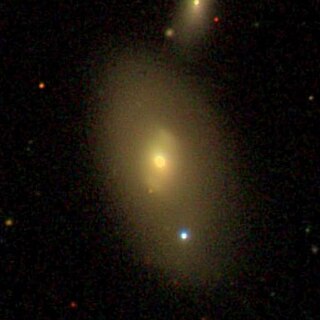
NGC 4296 is a barred lenticular galaxy located about 200 million light-years away in the constellation Virgo. It was discovered by astronomer William Herschel on April 13, 1784. It forms a pair with NGC 4297, and both galaxies are listed as CGCG 042-041, and KPG 331.
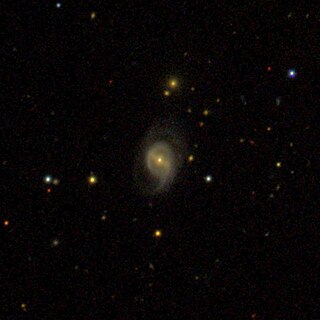
NGC 734 is a lenticular galaxy with a central bar in the constellation Cetus, which is about 538 million light years from the Milky Way. It was discovered on November 9, 1885 by the American astronomer Francis Preserved Leavenworth.

NGC 3937 is an elliptical or a lenticular galaxy located about 310 million light-years away in the constellation Leo. It was discovered by astronomer William Herschel on April 27, 1785 and is classified as a radio galaxy.

NGC 3925 is a barred lenticular galaxy and a ring galaxy located about 370 million light-years away in the constellation Leo. It was discovered by astronomer Heinrich d'Arrest on February 19, 1863.
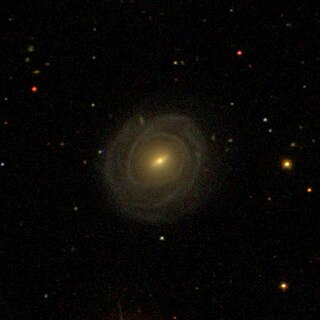
NGC 4326 is a barred spiral galaxy with a ring located about 330 million light-years away in the constellation Virgo. It was discovered by astronomer William Herschel on April 13, 1784, who described it as "vF, S, R, bM, 1st of 3". It is a large galaxy, with a diameter of around 200,000 ly (61 kpc) making it nearly twice the size of the Milky Way. NGC 4326 is also classified as a LINER galaxy. Despite being listed in the Virgo Cluster catalog as VCC 623, it is not a member of the Virgo Cluster but instead a background galaxy.
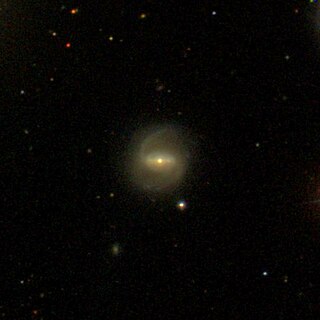
NGC 4333 is a barred spiral galaxy with a ring structure located about 330 million light-years away in the constellation Virgo. It was discovered by astronomer William Herschel on April 13, 1784, who described it as "F, pS, R, bM, 2nd of 3". NGC 4333 is also classified as a LINER galaxy. Despite being listed in the Virgo Cluster catalog as VCC 637, it is not a member of the Virgo Cluster but instead a background galaxy.




















